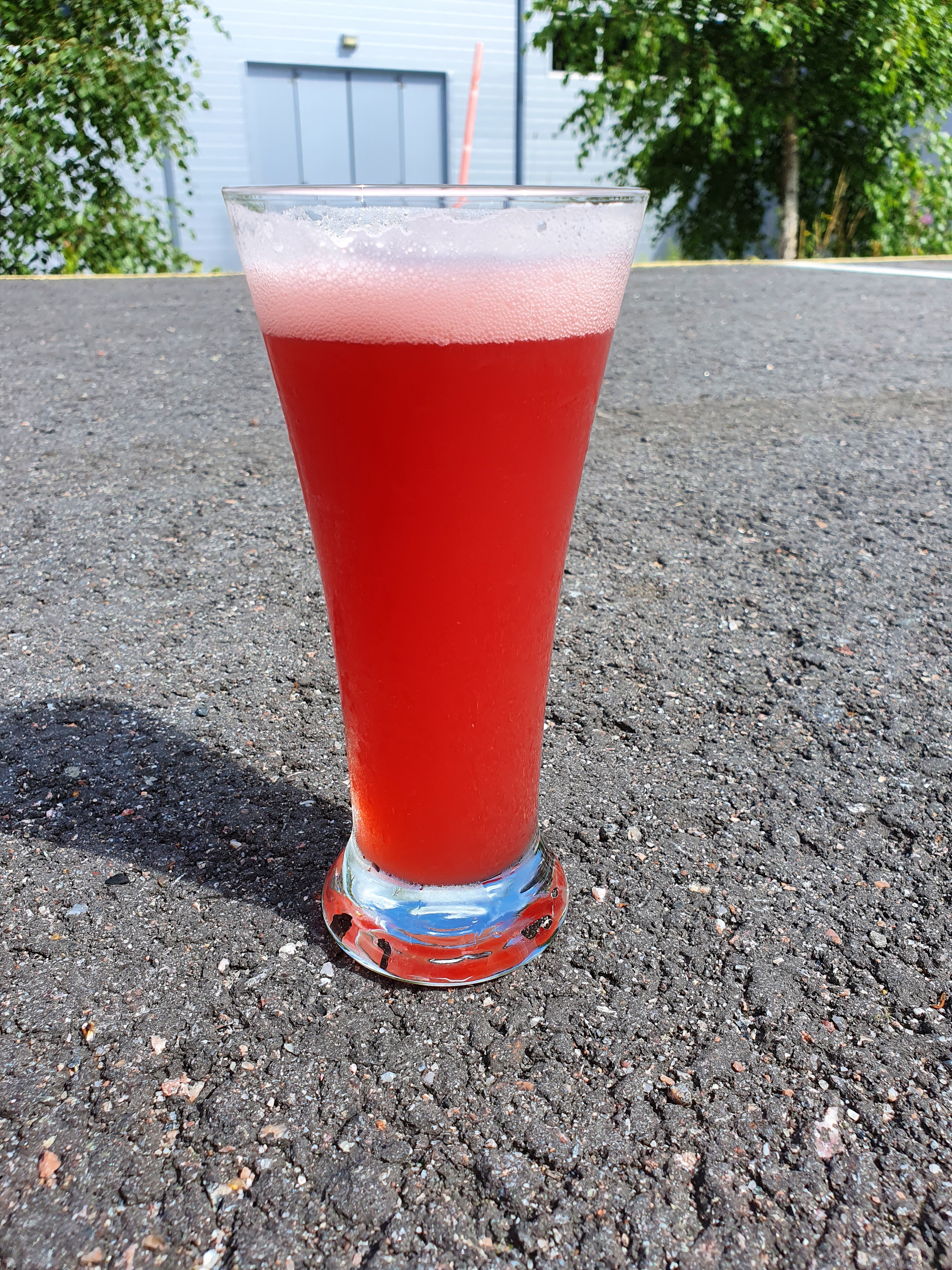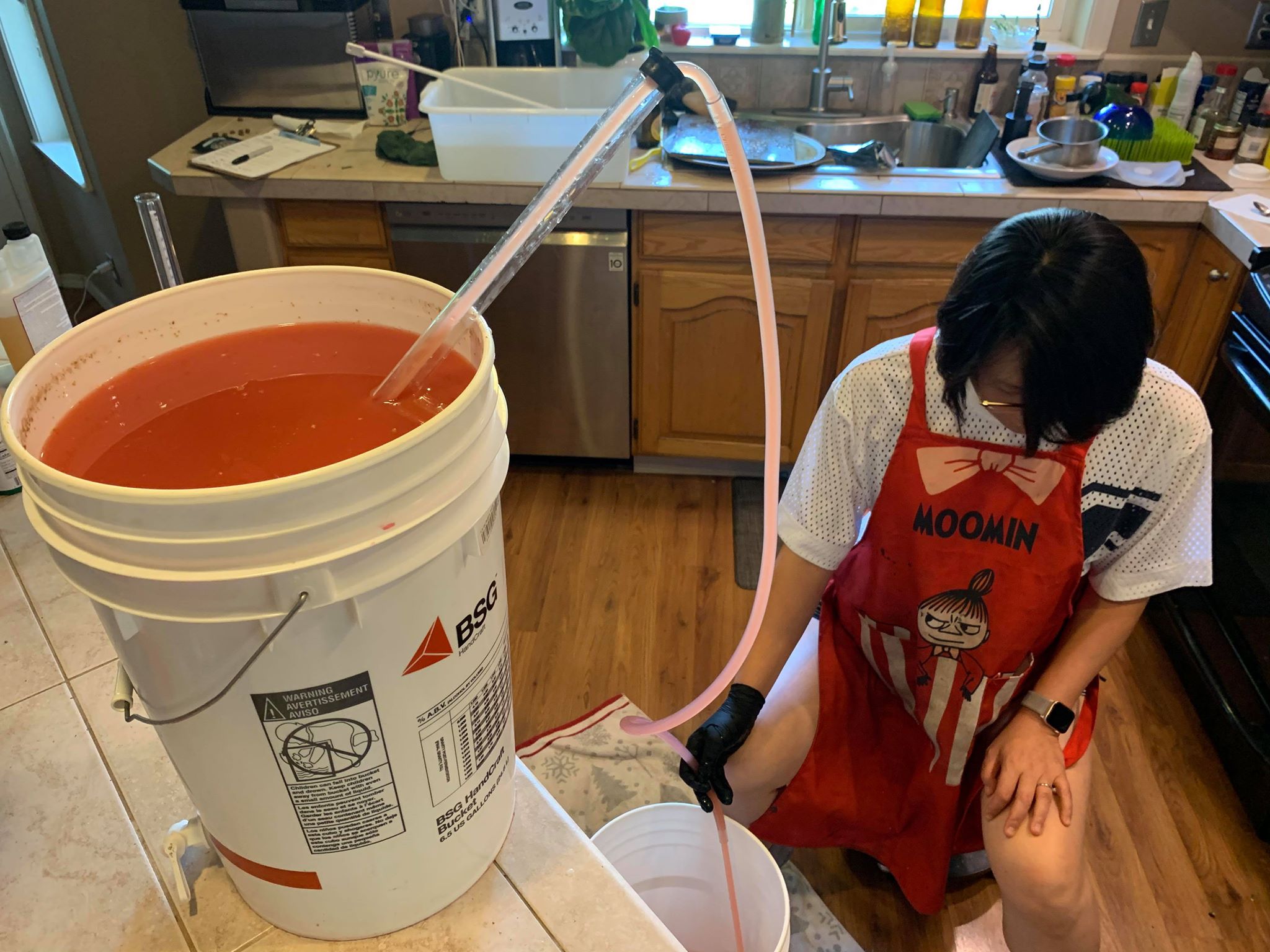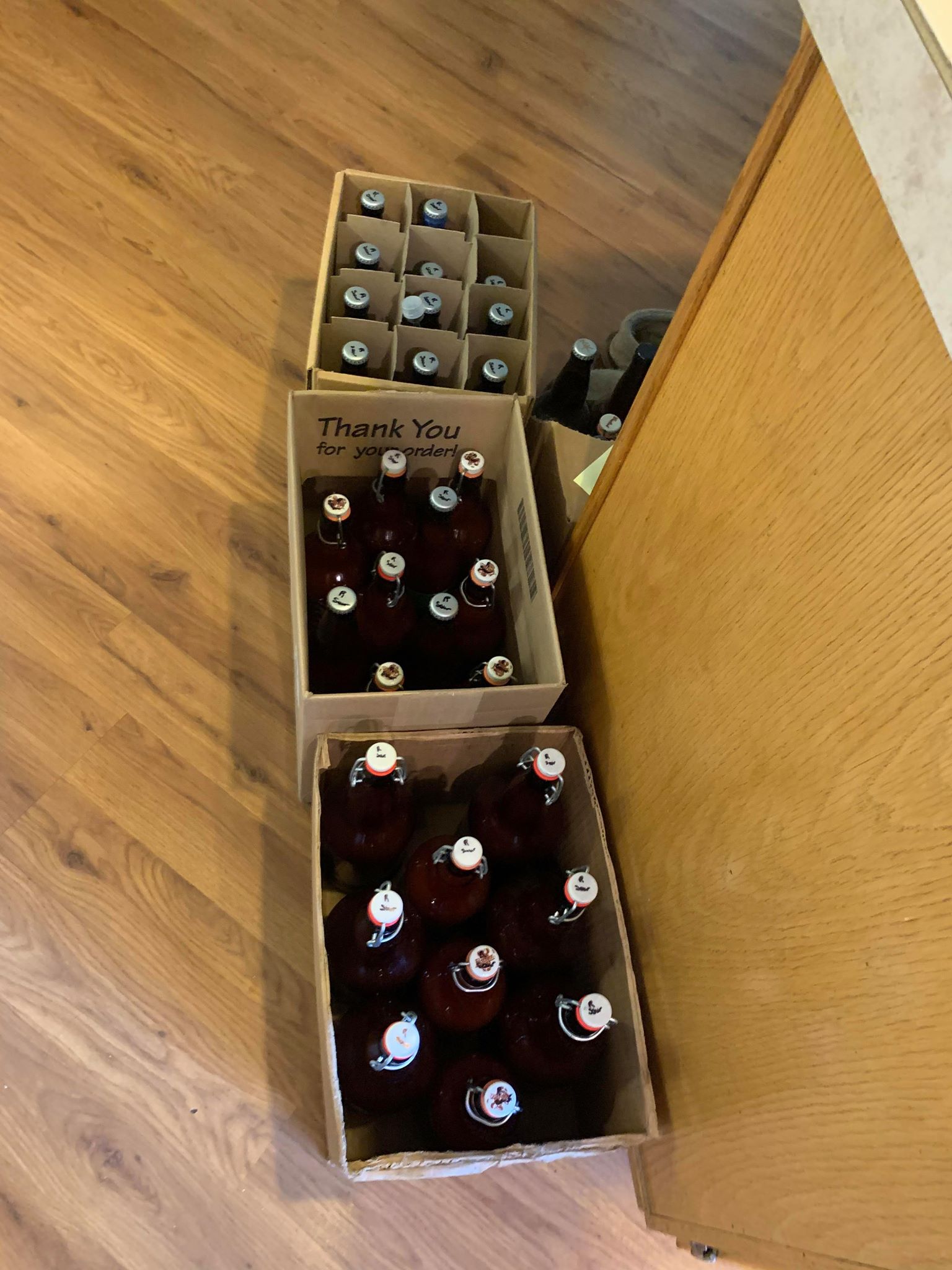orangemen5
Well-Known Member
- Joined
- Sep 26, 2012
- Messages
- 394
- Reaction score
- 28
Blending was my next thought. I'm going to try this again with a proper lacto starter and a slight earlier pitch. Thanks

Nope, hence my query this time about the delay... but it seems like the lactose I added in the boil may have had a delaying effect on the sourness, being the only factor I changed compared to my two previous sours.
It didn't make it nasty at all, just delayed the sourness, and there are loads of commercial sours with added lactose, so not sure that by itself is necessarily an issue.I wanted to reply based on some indirect experience. When I bottled my sours, my girlfriend stole a few of them an added plant-based non-fermentable sugar---similar to Lactose.
Those beers were super nasty. Basically, the sugar completely counteracted the sour (made it less sour), and all that remained was a sweeter beer-juice stuff. It was nasty!
I'd probably recommend keeping all sweetening agents away from sours from this experience.
I have a brett starter that is a little vinegary, left too long in the flask. Is this rescueable? I quite liked it to be honest but would like to check.

















It's best to monitor the starter and close it off and/or stop the aeration when it starts to get acetic. Acetic acid is not great for the yeast health, but otherwise it doesn't cause any problems with the batch.I have a brett starter that is a little vinegary, left too long in the flask. Is this rescueable? I quite liked it to be honest but would like to check.
A lot of commercial and home brewers use lactose in sour beers. It's not to my taste though.I'd probably recommend keeping all sweetening agents away from sours from this experience.
Sounds cool. Good luck!@RPh_Guy, I am starting to make a sour today. It will be a Raspberry Sour. Going to do the co-pitch method (trying it again). I will use the active capsules that I had to buy last time to fix the last batch. I'll use 1-2 capsules per gallon. I also bought some goodbelly blueberry....will probably dump some of that in as well. So yep, this will be my next attempt at a co-sour.
As far as the fruits addition, I'll add it on the 3-4 day of fermentation. I'm thinking to not worry about dry hopping it until the very end. I'm not worried about things becoming "too sour" since it's self limiting, and we tend to like very "sour" sours.
I plan to pre-acidify, like always. Will do a 30 minute boil.
Be aware pre-soured beers have much less flavor from the yeast, and probably less flavor from the bacteria as well.I'm thinking to pitch the lacto first during the kettle to carboy transfer. Then late tonight (about 6-8 hours later) I'll just pitch the yeast. I don't see anything wrong with doing this...it gives the lacto a little bit of a head start.
What characteristics do you think the saison yeast brought to the party? Curious about what different yeasts might add...My last batch was a raspberry sour, working crazy well. Got an og of 1.075 and mashed at 160-156 for an hour. Co pitched one pack of escarpment lacto into 2 carboys with a packet of saison yeast in each as well. Transferred to secondary after 8 days and pitched 1.5kg of raspberry. Fermented at 20 degrees for 27 days total, and finished with an fg of 1.018.
21 hours?I pre-soured for 14 hours [...] Pitched bugs at 6PM on Saturday. Pitched Yeast at 3:00PM
You only need one chiller. Run tap water until the wort is around 100-120°F, and then disconnect the tap water and circulate ice water through the same chiller. Using a pre-chiller is less effective.My point, not everyone will have a two-chiller setup...
I completely agree on this point, but it's not as good brewing practice as properly chilling and pitching ASAP. Chilling fast promotes good cold break formation so you can remove it. A pre-souring phase leaves the wort open to oxidation during that timeframe, as opposed to rapid chilling and pitching yeast, which consume oxygen.There is more contamination risk with letting wort sit with zero activity for 21 hours vs pitching something initially.
I would definitely add oak first. Contact time depends on the product and the quantity. 2oz of (unboiled) StaVin oak cubes in 5 gal will give a significant oak flavor in about a week. Chips will probably be faster. Making oak tea is another option if you want to experiment with a bench trial.I had a sample of my modern fast funky last night and its improved a lot. Crystal clear even though its a no boil with a slight film on top. I brewed it in a bucket. Has a pleasant acetic character. Planning to keg/bottle in a weeks time after i dry hop and oak it. Looking for some advice on oaking and what hops to use. Should i oak first and how long is good for contact time? I have noble hops or citra and el dorado, was thinking the latter would add some nice fruity notes. Cheers.
Should i oak first and how long is good for contact time?
I've just starting using amyloglucosidase in mixed ferm beers for quick packaging...
...My next test was a split batch where I did one gallon each of 1.) Belle Saison + Brett c. 2) WB-06 + Brett c. and 3.) more Fair Isle dregs (love this mix). I packaged these after just 6 days as they had the same FG as my initial enzyme batch (1.001). At bottling they were more sacc-expressive on the aroma with some subtle brett flavor.
I personally wouldn't worry about heating it.I suppose the safe approach is to heat it a bit and mix it with the boiled priming solution while it is still hot to kill anything that may be living in there.
Has anyone added balsamic vinegar to a sour at bottling time?



Great looking beer there. How many Lbs. of raspberries did you use.
@RPh_Guy @Funky Frank Thanks for your help. Much appreciated, will report back soon when i package it.
I have been adding a squirt of vinegar to my red sours when i bottle them made from the same beer. I will give the balsamic a go as well.
Thanks, I added a note in the wiki about balsamic.Just tried a pint with 5ml of regular (instead of white) balsamic vinegar. Be careful with the amounts in that case, it is much stronger and invasive, and IMO 5ml in 500ml was too much (maybe would not feel as invasive in a darker or stronger sour).

I still have to experiment more with this, I only have that Gose I brewed a few months ago to try this stuff, because it is winter now and all I am doing is lagers until spring. White balsamic vinegar produced a very good result with this beer (extra level of complexity without changing the color, and with more in there than just acetic flavor). Every time I open a bottle I serve it with 5ml of white balsamic now.Thanks, I added a note in the wiki about balsamic.
Thickness or body in Beers is primarily grainbill and use of unfermentable Adjuncts like lactose of maltodextrin. water profile is about mouthfeel and impact on flavor.What water profile are you guys going with.
I`ll be doing a heavily fruited sour. Love the thicker sours.

Like anything else, it depends on your taste and your goals.What water profile are you guys going with.
I`ll be doing a heavily fruited sour. Love the thicker sours.
Probably inaccurate pH reading.Looks like somethings gone wrong.
24 hours after pitching the sour pitch and my yeast it's gone down from 4.5 to 2.6
WTF???
Actually doesn't even taste that sour.
Drain pour???? View attachment 694155